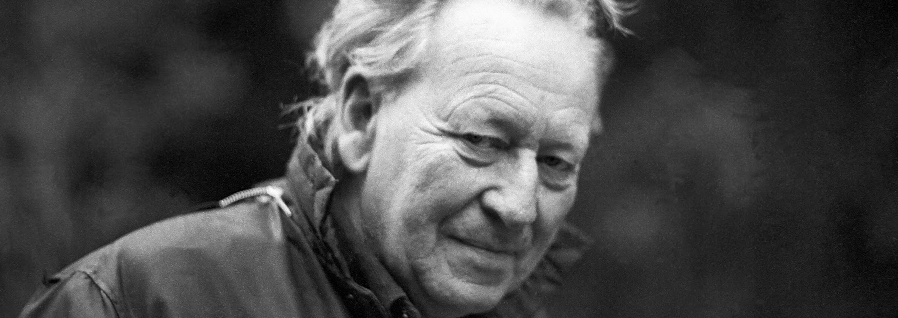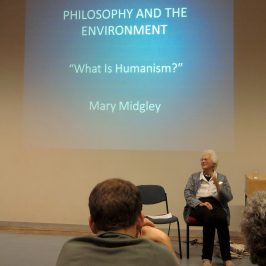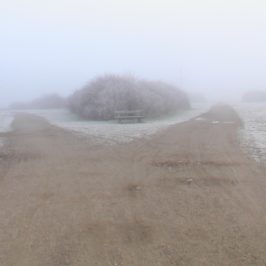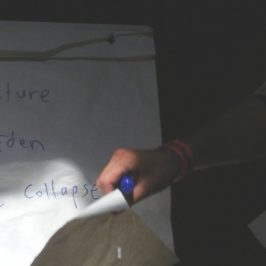I’d come to think of Gregory Bateson as an academic version of Alan Watts, pointing to the limits of the Western modernist worldview and probing unexplored territory between the disciplinary silos of the Academy. When I went to see An Ecology of Mind, the recent film about his life by his daughter Nora Bateson, I learnt that Bateson and Watts actually knew each other from their time teaching at Esalen. Interestingly, Watts employs Bateson’s concept of the double-bind in his book Psychotherapy East and West as a parallel to the Zen Buddhist koan, and he suggests that tackling the double-bind is about a kind of realisation that we’ve been set up by our way of thinking from the outset. Receiving two conflicting messages (consume more! save the planet!) we’re unable to respond adequately and become unable to confront the underlying dilemma. Damned if we do, damned if we don’t. Only by becoming aware of the set up can we move beyond it.
An Ecology of Mind is an endearing portrait of Gregory Bateson as a father and a thinker. It provides both an introduction to his way of thinking and a description of his lasting influence on a wide range of disciplines – and not least on Nora who was there to discuss the film and the ideas. The focus of the film is not so much on the perplexing and mesmerising intelligence of a charismatic intellectual as on the relevance his thought has for us today in dealing with the multiple crises we are living through. Bateson famously said that “the major problems in the world are the result of the difference between how nature works and the way people think.” The film explores what this difference means and how we can overcome it.
The short answers go something like this: we talk and think as if the world is static when it is nothing but change: there is no table or tree, only states of table and tree, and even the state we perceive and describe is not ‘it’; and, the pathology of wrong thinking can only be overcome by an enormous discovery of the beauty of nature. The false separations we make in our thought and language are a kind of epistemic violence which is at the root of both our psychological and physiological pathologies. In this way, the ‘multiple crises’ are actually part of one larger crisis, the crisis of thought itself. The main ingredient of the antidote is creativity. As the film points out: a creative impulse is necessary to introduce a qualitative level which wasn’t previously there. By engaging and participating in the world without imposing ourselves on it, perhaps we can ‘adjust our lenses’, our social and cultural conditioning, and shed abstraction.
Although I’ve managed make a short summary out of that, it is of course a difficult and complex task – it is different for all of us and it has no predefined list of boxes to tick. Most often it can’t be done head on because the important lessons are always on the periphery of our vision. It is almost as if taking in Gregory Bateson’s ideas requires that we acquire a new kind of visual sense all together. His thought is a kind of sideways thinking which takes me back and forth through states of surprise, bafflement, confusion and insight. I remember reading the following lines and going through one of those moments where, once the idea is processed, the world never looks the same again:
“I will get nowhere by explaining prideful behaviour, for example, by referring to an individual’s “pride”. Nor can you explain aggression by referring to instinctive (or even learned) “aggressiveness”. Such an explanation, which shifts attention from the interpersonal field to a factitious inner tendency, principle, instinct, or whatnot, is, I suggest, very great nonsense which only hides the real questions.”
The shift in attention away from an imagined and hidden inner realm towards the relational, interpersonal field makes a world of a difference (incidentally, this same shift in attention is exactly what Wittgenstein is working at in his discussion about the idea of the private object, see chapter five in McGinn, 1997). Aggression does not exist inside someone as a feature of their ‘personal nature’ but exists in the relations between personalities in their environments… Well-being is not about achieving an inner ‘state of mind’ but about a certain kind of balanced correspondence with the surrounding world… Wisdom does not spring from an invisible well deep inside our minds but sits between us as we become aware of our mutuality and interdependence… Try this out with a noun of your own choice.
Bateson wants us to see that what in our language we label and talk of as distinct entities – whether it is the computer you are reading these words of off, an emotional state, or the speaking subject itself – are actually complex webs of relations. What constitutes objects are the relationships they comprise; they are not actually separate entities in the way we usually talk about them. In this way, we can know nothing about a thing in itself but we can examine the relations between things. Every ‘thing’ should therefore be understood in its context; it is the context that makes it what it is. Words make sense only in the stream of life, as Wittgenstein would say.
The consequences of turning our attention away from separate entities towards the connections between entities are far reaching. It goes to the bottom of our notion of ‘self’ and overturns the individualistic belief that ‘I’ am an autonomous mind inside ‘my’ body (or brain):
“The total self-corrective unit which processes information, or, as I say, ‘thinks’ and ‘acts’ and ‘decides’, is a system whose boundaries do not at all coincide with the boundaries either of the body or of what is popularly called the ‘self’ or ‘consciousness’; and it is important to notice that there are multiple differences between the thinking system and the ‘self’ as popularly conceived.”
And it proceeds outward, to re-draw the boundaries between self and environment, making connections between the interacting subjects. This move also entails a radical redefinition of ‘mind’ and ‘intelligence’, which doesn’t privilege any one part of a systems as ‘intelligent’:
“Consider a man felling a tree with an axe. Each stroke of the axe is modified or corrected, according to the shape of the cut face of the tree left by the previous stroke. The self-corrective (i.e., mental) process is brought about by a total system, tree-eyes-brain-muscles-axe-stroke-tree; and it is this total system that has the characteristics of immanent mind.”
Bateson’s ideas are not always immediately approachable and never obvious. They require time and patience and are often best approached without searching for straightforward answers. His last book Mind and Nature sometimes feels like deciphering an ancient language – you need to re-learn the symbols and meanings that your culture has forgotten. His work was a radical re-thinking of epistemology and a vision of an ecology of ideas that was decades ahead of its time and remains visionary today. Perhaps for that very reason it is time for us to take on his ideas.
An Ecology of Mind opens up a space for exploring Bateson’s ideas while it remains interested in what changing the way we think actually means without the grand calls for ‘new thinking’, a ‘new narrative’, or ‘new culture’. It suggests that changing our behaviour and thought patterns is actually about waking up to the inaccuracy of our language and embarking in earnest on the project of arriving at better descriptions through creative, participatory engagement. It is a journey that begins with breaking the spell of our own double-binds. In the words of Alan Watts, “one can play [the game] all the better for seeing that it is a game”. And it is a game that requires patience and time: “we don’t have time to all be in such a hurry”, as Nora said at the end of the evening.







Leave a Reply